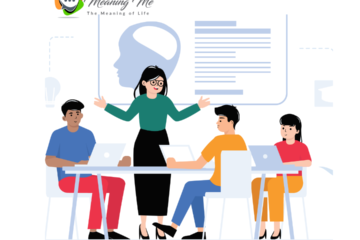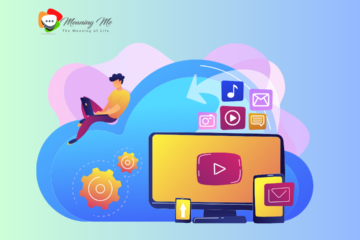Education Evolved: Unleashing the Power of Personalized Learning
Introduction
Traditional education often employs a “one-size-fits-all” approach, where students progress through the curriculum at a set pace and receive the same instruction regardless of their individual needs. Personalized learning disrupts this uniformity, aiming to tailor the educational experience to each student’s strengths, weaknesses, interests, and learning styles. This approach recognizes that students are not blank slates; they come to the classroom with unique backgrounds, experiences, and preferred ways of absorbing information.
The core of personalized learning lies in understanding these individual variations. Teachers utilize various methods to assess student needs, such as pre-tests, interest surveys, and learning style inventories. This information allows them to craft customized learning plans that target specific skills and knowledge gaps. For instance, a student excelling in math might be challenged with advanced problem-solving activities, while another needing more foundational support might receive targeted instruction and practice exercises.

The beauty of personalized learning lies in its flexibility. It allows students to progress at their own pace, some accelerating through material they grasp quickly, while others receive additional support to solidify their understanding. This can involve differentiated instruction, where teachers present the same concept using various methods like lectures, discussions, visual aids, or hands-on activities to cater to diverse learning styles. Technology also plays a significant role, with adaptive learning software that adjusts the difficulty level based on student performance and online resources offering a vast array of learning materials to suit individual preferences.
Personalized learning goes beyond just content and pace. It fosters a student-centered environment where learners take ownership of their education. Through goal setting, self-assessment, and reflection activities, students become active participants in their learning journey. This increased autonomy fosters motivation and engagement, as students pursue knowledge that is relevant and meaningful to them.
The benefits of personalized learning are numerous. Studies have shown it can lead to improved academic achievement, increased engagement, and a deeper understanding of concepts. Students who feel their learning caters to their strengths and interests are more likely to be motivated and take ownership of their education. Personalized learning can also address equity concerns by ensuring all students receive the support they need to succeed.
However, implementing personalized learning effectively requires significant effort. Teachers need ongoing professional development to acquire the necessary skills and strategies. Additionally, addressing the needs of each student necessitates smaller class sizes and access to a variety of resources. While challenges exist, personalized learning offers a promising approach to education, one that empowers students to become active participants in their own learning journey.
Personalized Learning in Bite-Sized Pieces
Personalized learning goes beyond just catering to individual learning styles and paces. It also considers the time constraints faced by many learners. In this vein, microlearning emerges as a powerful tool to enhance personalized learning experiences. Here’s how:
1. Recognition of Individuality: Personalized learning acknowledges that every learner is unique, with different learning styles, strengths, weaknesses, interests, and preferences. It moves away from the one-size-fits-all approach to education and embraces the diversity of learners within the classroom.
2. Customized Instruction: Personalized learning involves tailoring instruction to meet the specific needs of each student. This could include adjusting the pace of learning, providing additional support in areas where students struggle, or offering enrichment opportunities for those who excel.
3. Flexible Learning Paths: Instead of following a predetermined curriculum, personalized learning allows students to pursue learning paths that align with their interests and goals. This flexibility empowers students to take ownership of their learning and fosters a deeper sense of engagement.
4. Utilization of Technology: Technology plays a crucial role in personalized learning by providing tools and resources that facilitate individualized instruction. Adaptive learning platforms, digital assessments, and online resources allow educators to gather data on student progress and tailor instruction accordingly.
5. Promotion of Self-Regulated Learning: Personalized learning encourages students to become self-regulated learners who take responsibility for their own learning journey. By setting goals, monitoring their progress, and reflecting on their learning experiences, students develop essential skills for lifelong learning.
6. Differentiated Instruction: Within a personalized learning environment, educators employ differentiated instruction strategies to accommodate the diverse needs of students. This may involve varying instructional methods, grouping students based on readiness levels, or providing alternative assessments.
7. Cultivation of 21st-Century Skills: In addition to academic content, personalized learning emphasizes the development of 21st-century skills such as critical thinking, communication, collaboration, creativity, and problem-solving. These skills are essential for success in today’s rapidly changing world.
8. Inclusive Education: Personalized learning promotes inclusivity by ensuring that all students, regardless of background or ability, have access to a high-quality education tailored to their needs. It helps to close achievement gaps and create a more equitable learning environment.
9. Teacher as Facilitator: In a personalized learning setting, the role of the teacher shifts from being a dispenser of knowledge to a facilitator of learning. Educators guide and support students as they navigate their individual learning paths, providing feedback, encouragement, and personalized assistance.
10. Continuous Improvement: Personalized learning is an iterative process that requires ongoing assessment, reflection, and adjustment. Educators continuously monitor student progress, evaluate the effectiveness of instructional strategies, and make modifications to ensure that each student’s needs are met.
By incorporating these points into discussions about personalized learning, educators and stakeholders can better understand its significance in tailoring education to individual needs and preferences, ultimately leading to improved student outcomes and a more engaging learning experience.
Recognition of Individuality
In personalized learning, the recognition of individuality lies at the very heart of its philosophy. Unlike traditional educational models that often treat students as uniform entities, personalized learning acknowledges and celebrates the unique qualities, strengths, and challenges of each learner. By embracing diversity in learning styles, interests, and backgrounds, personalized learning creates a nurturing environment where students feel seen, valued, and understood. Whether through customized learning plans, adaptive technologies, or personalized feedback, educators recognize that every student possesses a distinct set of abilities and learning pathways. This recognition of individuality not only fosters a deeper connection between students and their learning experiences but also lays the foundation for personalized growth and academic achievement.
Customized Instruction
Customized instruction lies at the heart of personalized learning, offering a tailored educational experience that addresses the diverse needs and preferences of each learner. Unlike traditional one-size-fits-all approaches, customized instruction recognizes that students vary in their learning styles, interests, and abilities. Through personalized learning, educators can adapt instructional strategies, content delivery, and assessment methods to align with the unique requirements of individual students. This may involve providing additional support for struggling learners, offering enrichment opportunities for advanced students, or incorporating varied learning modalities to accommodate different preferences. By customizing instruction, personalized learning ensures that every student receives the targeted support and resources they need to thrive academically and reach their full potential.
Flexible Learning Paths
Flexible learning paths are the cornerstone of personalized learning, offering students the freedom to navigate their educational journey according to their unique needs and preferences. Rather than adhering to rigid, predetermined curricula, personalized learning embraces flexibility, allowing students to chart their course based on their pace of learning, interests, and prior knowledge. In a personalized learning environment, students have the opportunity to explore diverse topics, delve deeper into areas of interest, and bypass content they have already mastered. This flexibility not only accommodates the diverse learning styles and abilities of students but also fosters a sense of agency and ownership over one’s education. Whether through self-paced modules, individualized projects, or collaborative learning experiences, flexible learning paths empower students to take control of their learning and pursue academic goals that resonate with their aspirations. By adapting instruction to meet the evolving needs of each learner, personalized learning ensures that education is truly tailored to the individual, promoting deeper engagement, higher achievement, and lifelong learning habits.

Utilization of Technology
Central to the success of personalized learning is the seamless integration of technology into educational practices. Technology serves as a powerful enabler, providing educators with the tools and resources needed to tailor instruction and support individualized learning journeys. Adaptive learning platforms, intelligent tutoring systems, and data analytics tools play a pivotal role in personalizing instruction by analyzing student performance, identifying learning gaps, and delivering targeted interventions. Furthermore, digital content repositories offer a vast array of resources that cater to diverse learning styles and preferences, allowing students to explore topics at their own pace and delve deeper into areas of interest. Through the utilization of technology, personalized learning transcends the constraints of traditional classroom boundaries, creating dynamic and interactive learning environments where students are empowered to take ownership of their education.
Promotion of Self-Regulated Learning
Central to the philosophy of personalized learning is the promotion of self-regulated learning (SRL), an essential skill that empowers students to take control of their learning process. By tailoring education to individual needs and preferences, personalized learning encourages students to become active participants in their own learning journey. Through personalized learning environments, students are equipped with the tools and resources necessary to set meaningful learning goals, monitor their progress, and reflect on their learning experiences. This process of self-regulation fosters metacognitive awareness, as students develop a deeper understanding of their strengths, weaknesses, and learning strategies. Moreover, personalized learning encourages students to take ownership of their learning, promoting a sense of responsibility and accountability for their academic success. By cultivating self-regulated learners, personalized learning not only enhances academic achievement but also equips students with lifelong skills that are essential for success in the 21st century.
Differentiated Instruction
Differentiated instruction lies at the heart of personalized learning, offering a nuanced approach to addressing the diverse needs of students within the classroom. Unlike traditional teaching methods that apply a uniform approach to all learners, differentiated instruction recognizes that students come to the classroom with varied backgrounds, abilities, and learning styles. This approach involves tailoring instruction to meet the specific needs of each student, whether through modifications in content, process, product, or learning environment. For example, a teacher might provide alternative reading materials at different reading levels to accommodate the varying literacy levels of students in the class. Similarly, in mathematics, students may be given different sets of problems based on their proficiency levels, ensuring that each student is appropriately challenged and supported. By embracing differentiated instruction as part of personalized learning, educators create inclusive classrooms where every student can thrive, regardless of their individual strengths and weaknesses.
Cultivation of 21st-Century Skills
Central to the ethos of personalized learning is its role in cultivating 21st-century skills essential for success in today’s rapidly evolving world. By tailoring education to individual needs and preferences, personalized learning goes beyond the transmission of content knowledge to foster critical competencies such as collaboration, communication, creativity, and critical thinking. Through personalized learning experiences, students engage in real-world problem-solving, collaborative projects, and interdisciplinary explorations that mirror the complexities of the modern workforce. This approach not only equips learners with the technical skills required for the digital age but also nurtures adaptability, resilience, and a growth mindset—attributes crucial for navigating ambiguity and uncertainty. Furthermore, personalized learning encourages students to become self-directed learners, adept at leveraging resources, managing time effectively, and pursuing their passions with purpose. As a result, personalized learning serves as a catalyst for the development of lifelong learners equipped to thrive in an ever-changing global landscape.
Inclusive Education
Inclusive education lies at the heart of personalized learning, embodying the principle that every learner, regardless of background or ability, deserves equal access to quality education. By tailoring education to individual needs and preferences, personalized learning serves as a powerful catalyst for inclusivity in the classroom. Through flexible instructional strategies, adaptive technologies, and a commitment to diversity, personalized learning ensures that all students, including those with disabilities, English language learners, and those from marginalized communities, are provided with the support and resources they need to thrive. In this inclusive environment, every student is valued for their unique contributions, and barriers to learning are dismantled, creating a truly equitable educational experience for all. Thus, personalized learning not only enhances academic achievement but also fosters a culture of acceptance, empathy, and respect where every learner can flourish.
Teacher as Facilitator
In the personalized learning paradigm, the role of the teacher undergoes a significant transformation, shifting from that of a traditional lecturer to that of a facilitator and guide. Rather than simply disseminating information, the teacher becomes a mentor who empowers students to take ownership of their learning journey. As facilitators, teachers create a supportive environment where students are encouraged to explore their interests, pursue their passions, and tackle challenges at their own pace. They serve as mentors, offering guidance, feedback, and encouragement as students navigate through personalized learning pathways. By fostering a collaborative relationship with their students, teachers not only impart knowledge but also instill essential skills such as critical thinking, problem-solving, and self-reflection. In this way, the teacher, as a facilitator, plays a vital role in nurturing independent learners who are equipped to thrive in an ever-changing world.
Continuous Improvement
Continuous improvement is at the heart of personalized learning, driving its evolution and refinement over time. Through ongoing assessment and feedback mechanisms, educators can gather valuable insights into student progress, preferences, and areas for growth. By leveraging data analytics and qualitative feedback, educators can iteratively adjust instructional strategies, curriculum content, and learning resources to better meet the individual needs of students. This cyclical process of reflection, adaptation, and refinement ensures that personalized learning remains responsive to the changing dynamics of the classroom and the evolving needs of learners. Moreover, by fostering a culture of continuous improvement, personalized learning encourages educators to collaborate, share best practices, and engage in professional development opportunities to enhance their pedagogical skills. Thus, continuous improvement not only strengthens the effectiveness of personalized learning but also reinforces its commitment to student-centered education.

conclusion
Personalized learning stands as a beacon of innovation in the realm of education, heralding a future where every learner is empowered to thrive. By prioritizing individual needs and preferences, this transformative approach fosters a dynamic learning environment that celebrates diversity and cultivates excellence. Through personalized learning, students not only acquire knowledge but also develop essential skills such as critical thinking, problem-solving, and self-regulation. Moreover, personalized learning promotes equity and inclusion, ensuring that every student receives the support and resources they need to succeed.
Stay Tune MeaningMe The Meaning of Life
What is personalized learning?
Personalized learning is an educational approach that customizes instruction, content, and pace to match the unique needs, interests, and preferences of each learner. It moves away from the traditional one-size-fits-all model of education and embraces flexibility and customization.
How does personalized learning work?
Personalized learning utilizes various strategies, including adaptive learning technologies, differentiated instruction, project-based learning, and competency-based progression. Educators gather data on students’ learning styles, strengths, weaknesses, and interests to tailor instruction accordingly, ensuring that each student receives individualized support and challenges
What are the benefits of personalized learning?
Personalized learning offers numerous benefits, including increased student engagement, improved academic outcomes, greater motivation and autonomy, enhanced critical thinking and problem-solving skills, and a more inclusive learning environment that accommodates diverse needs and backgrounds.
Can personalized learning work for all students?
Yes, personalized learning can be adapted to meet the needs of students at various grade levels, abilities, and backgrounds. While the specific implementation may vary, the core principles of customization and flexibility can benefit learners across diverse contexts.
What role does technology play in personalized learning?
Technology plays a crucial role in personalized learning by enabling educators to collect and analyze data on students’ progress, preferences, and learning patterns. This data informs instructional decisions, allows for adaptive learning experiences, and provides opportunities for personalized feedback and assessment.
How does personalized learning address equity and inclusion in education?
Personalized learning promotes equity and inclusion by recognizing and accommodating the diverse needs of all learners. By providing tailored support and removing barriers to learning, personalized learning ensures that every student has the opportunity to succeed, regardless of their background or circumstances.
How can educators implement personalized learning in the classroom?
Educators can implement personalized learning by incorporating strategies such as flexible grouping, student choice in assignments and projects, personalized learning paths, regular assessment and feedback, and leveraging technology tools for individualized instruction and support
What challenges might arise with personalized learning?
Challenges with personalized learning may include resource constraints, technological barriers, ensuring equitable access to learning opportunities, managing diverse student needs within a single classroom, and providing adequate professional development and support for educators.
How can parents support personalized learning at home?
Parents can support personalized learning at home by encouraging self-directed learning, providing access to resources that match their child’s interests and learning style, communicating with teachers about their child’s progress and needs, and fostering a positive attitude towards learning and exploration




